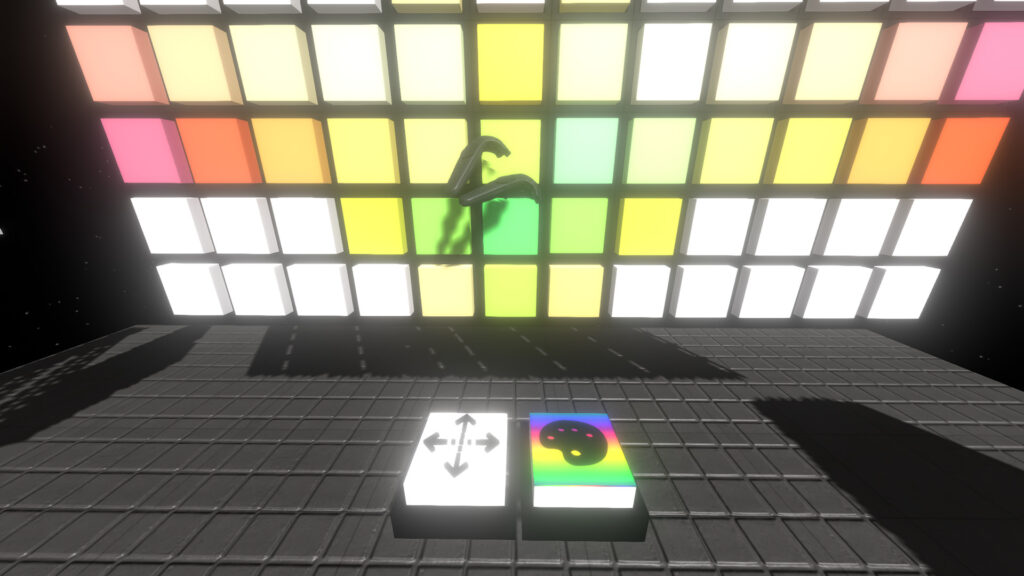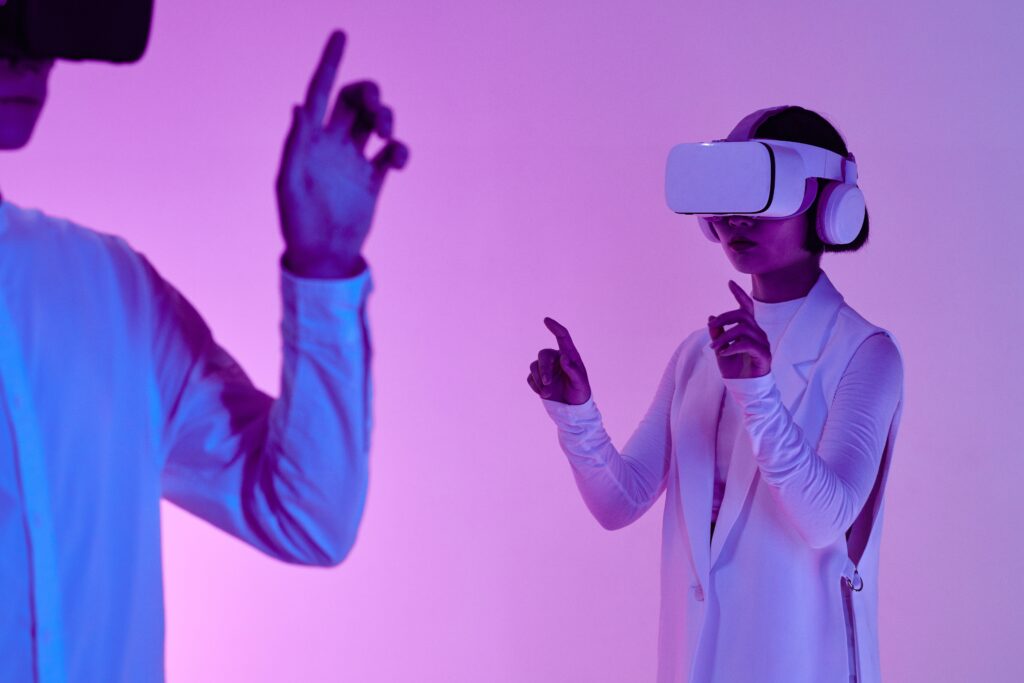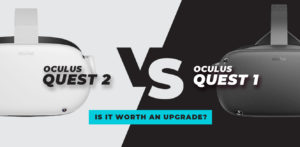Introducing VR Therapy for Anxiety Treatment
It’s become clear that virtual reality (VR) technology has enormous potential to enhance the lives of people with impairments. While virtual reality (VR) is most commonly linked with gaming and entertainment, its use in the medical and healthcare fields is quickly growing. In particular, there has been a lot of interest in using VR to alleviate anxiety in individuals with neurodevelopmental impairments.
Recently, researchers looked at how well a virtual reality (VR) sensory environment called Evenness helped adults with developmental disabilities deal with their anxiety and sadness. The results of the study highlight the potential benefits of VR for increasing independence and happiness among the crippled.
The purpose of the research, which focused on the Evenness VR sensory room, was to help people with neurodevelopmental problems cope with anxiety. In order to help people with emotional management, traditional sensory rooms have been used for quite some time. However, difficulties in accessing these rooms and their scarcity prevented them from being used frequently. The emergence of virtual reality (VR) sensory rooms offers a possible answer by creating a virtual, immersive environment that can be easily accessed and adapted to meet the demands of each unique user.
Thirty-one people with varied degrees of developmental difficulties took part in the study, using the Evenness VR sensory room as a kind of experimental therapy. The virtual reality experience included visuals, audio, and tactile interactions that stimulated the user’s senses. Participants’ anxiety and depression levels were found to decrease significantly after VR sessions, as measured by quantitative measures. Positive social effects and reduced anxiety were also noted in qualitative responses. These results highlight the promise of virtual reality (VR) in helping persons with developmental impairments cope with anxiety and increase their sense of happiness.
Together we’ll explore the study’s findings, the potential impact of VR on the everyday lives of disabled individuals, and the various ways VR is being used to enhance accessibility and well-being. Let’s get into it!
Sensory Rooms and the Accessibility Challenge
Traditional sensory rooms have been utilized for decades to help manage distress, behavior, and emotional regulation in individuals with neurodevelopmental disabilities. These rooms incorporate visual, auditory, and tactile devices to provide therapeutic experiences. While there is consensus on the perceived benefits of traditional sensory rooms, there are logistical challenges that limit accessibility, particularly for individuals with disabilities who may have limited access to required resources.
Virtual Reality Sensory Rooms as an Accessible Solution
To address the accessibility hurdles, virtual sensory rooms accessed through VR technology have emerged as a potential solution. In the study on Evenness VR sensory space, 31 adults with varying levels of developmental disability participated in a trial to evaluate its effectiveness. The VR sensory space provided interactive sight, sound, and touch experiences, offering a more accessible and immersive environment. The study, published in the Nature Scientific Reports Journal, focused on the Evenness VR Sensory Space and its impact on adults with neurodevelopmental disabilities, including autism and intellectual disability. The study involved aimed to evaluate the viability and health benefits of the Evenness VR technology as an effective intervention tool.
The findings of the study indicated positive outcomes for adults with developmental disabilities. The participants reported improvements in anxiety and depression levels after engaging with the Evenness VR Sensory Space. The qualitative findings also highlighted enhanced social participation and perceived positive impacts on anxiety. While these findings are promising, it is important to note that the study had a small sample size, limited duration, and lacked a control group.
The Promising Potential of VR in Clinical Applications
Initially, VR was mainly explored for psychotherapeutic purposes, such as exposure therapy for fears or phobias. However, its potential applications in medicine and healthcare have expanded. VR has been suggested as a replacement for sedatives during surgery and as a novel approach to diagnosing ADHD. The study on Evenness VR sensory space adds to the growing body of research on the clinical applications of VR, showcasing its potential for treating anxiety in adults with developmental disabilities.
Expanding Accessibility and Changing Lives
The potential applications of VR in enhancing the everyday lives of disabled individuals are vast. VR can be used as a tool to plan accessible routes in advance, reducing anxiety and promoting independent travel. It can also aid in physical rehabilitation, helping individuals with motor disabilities recover and regain functionality. Additionally, VR offers opportunities to experience new activities and overcome physical limitations, providing a gateway to new and exciting experiences.
Virtual reality has also shown promise in supporting individuals with visual impairments. By providing magnification, contrast control, and bold images and text, VR can enhance visual experiences and bridge the gap between the visually impaired and the world around them. Furthermore, VR can be used as a tool for therapy and skill development in individuals with cognitive disabilities. Through role-playing scenarios and interactive environments, VR can help improve memory skills, cognition, and social interaction abilities. We’ll explore some of these possibilities in depth below.
VR as a Learning Tool, Confidence Builder, and Career Enhancer
Beyond its therapeutic applications, VR serves as a powerful learning tool for individuals with disabilities. It can provide accessible, engaging, and personalized experiences, helping individuals learn spatial awareness, social skills, and problem-solving abilities. VR can also act as a confidence builder, allowing individuals to overcome their fears and limitations in a safe environment. Moreover, VR can enhance career prospects by providing opportunities to acquire new skills, showcase talents, and connect with employers through virtual communities and projects.
Building Confidence and Social Interaction
This research has ramifications beyond the narrow field of virtual reality for the treatment of anxiety. Virtual reality technology shows tremendous potential for improving the lives of people with disabilities in a wide range of settings. Virtual reality’s potential to improve accessibility is substantial. Virtual reality helps people with mobility impairments feel more confident and independent by allowing them to virtually explore areas and map out accessible paths. This not only lessens the stresses of venturing into the unknown but also provides fresh opportunities for interacting with others.
Physical Therapy through VR
Virtual reality has also been useful in the field of physical therapy. Virtual reality (VR) helps people with motor disabilities practice and acquire motor skills by imitating movements and offering feedback. Virtual reality therapy, for example, has been shown to aid in motor recovery and restore neural networks for stroke patients. New possibilities and hope may open up for people with impairments thanks to these VR-based therapy innovations.
Exploring Horizons for Adults with Disabilities
Additionally, virtual reality opens up a world of new possibilities. It paves the way for disabled people to have adventures that might otherwise be out of reach. Virtual reality (VR) allows users to overcome obstacles and expand their horizons in a variety of ways, including mountain climbing, surfing, and discovering new worlds. Not only may you have fun and feel a sense of adventure through these encounters, but they can also help you develop as an individual, boost your confidence, and open your mind to new possibilities.

Benefits for the Visual & Cognitive Impaired
People with visual impairments can also benefit from virtual reality. Virtual reality can help the visually handicapped interact with the world around them by enlarging objects, adjusting the contrast, and providing audible clues. Virtual reality aids people with visual impairments in seeing and interacting with virtual settings by providing both visual and auditory descriptions.
Virtual reality (VR) can also help with cognitive impairments. People with cognitive disabilities can learn how to interact with others, handle challenging situations, and grow in other important ways in virtual worlds. Virtual reality (VR) helps with education, memory retention, and CBT by providing interactive role-playing scenarios. This has the potential to help people with cognitive disabilities live more independently, engage in more social activities, and feel less anxious.
Pro Tips of Using VR Therapy for Anxiety in Adults with Disabilities
- It is important to get the advice of healthcare professionals or therapists who have expertise in utilizing VR technology in a clinical context before implementing VR as a treatment for anxiety in individuals with impairments. Advice on suitable VR applications, configurations, and methods can be given to meet the individual’s requirements.
- When using VR for exposure therapy, it is important to begin with less stressful circumstances and work up to more difficult ones. This method of slow exposure helps people overcome their fears by gradually increasing their exposure over time.
- Virtual reality (VR) software can be altered to meet the specific requirements of each user. Think of customizing the images, sounds, and touches to make it more unique and interesting. The therapeutic potential of VR could be increased with this level of personalization.
- Encourage people to use mindfulness practices while they are experiencing virtual reality. Emotional regulation and anxiety management can be enhanced by the practice of deep breathing, relaxation exercises, and grounding techniques.
- The immersive experience and therapeutic effects of virtual reality (VR) can be improved by including multisensory experiences. Relaxation and reduced anxiety can result from a more realistic and engaging environment created by combining visual, aural, and tactile aspects.

Frequently Asked Questions (FAQs)
Can people with disabilities safely use virtual reality?
Yes, with proper setup and supervision, VR can be safe for people with special needs. Whether a user has a visual impairment or a motor disability, it is essential that the VR equipment be adapted to meet their needs. The safety and effectiveness of virtual reality therapy can be improved by collaborating with medical experts.
Can virtual reality (VR) take the place of conventional treatment for anxiety in disabled people?
Virtual reality (VR) is not meant to replace conventional treatment methods, but rather to supplement them. Virtual reality (VR) has the potential to be a useful therapeutic tool, but it must be used in conjunction with consistent professional supervision. It is impossible to track improvement, meet unique patient needs, and provide comprehensive care without the assistance of trained therapists or medical professionals.
Are there any risks associated with utilizing VR to alleviate anxiety?
Although dizziness, nausea, and eye strain are uncommon, they may occur in a small percentage of people. Adjusting the VR settings or taking breaks throughout sessions can help reduce the severity of these effects. It’s crucial to let doctors know if you’re feeling any pain or worry.
When using virtual reality to treat anxiety, how long before you start to feel better?
Depending on the patient and the VR therapy program, the amount of time it takes to notice improvement varies. Some patients may see significant progress after just a few sessions, while others may need more. The success of a therapy plan depends on several aspects, including consistency, practice, and individualization.
Is In-Home Virtual Reality Therapy an Option?
While it is true that virtual reality therapy can be practiced at home, especially for those with special needs, it is crucial to have expert direction and supervision. Safe and successful use of virtual reality (VR) technology during treatment can be ensured with the help of advice from healthcare specialists.
Can I get reimbursed for Virtual Reality treatment?
It depends on the policy and insurer. Virtual reality therapy may or may not be covered. It’s a good idea to contact your insurance company and talk to healthcare specialists who can help you understand your coverage options and file claims, if necessary.
Keep in mind that your virtual reality therapy experience and results may differ from other people’s. The finest assistance and support throughout treatment can be obtained by consulting with healthcare specialists and therapists who specialize in VR therapy.
VR Opens Up a World of Possibilities for the Disabled Population
Virtual reality’s (VR) ability to open up new worlds of possibility, enhance experiences, and promote growth is having a profound impact on the lives of people with disabilities. Researchers at Evenness VR’s Sensory Space have found that virtual reality can help adults with neurodevelopmental disorders feel less anxious and more involved in their communities. As science and technology advance, there is hope that we can make the world a more inclusive and accessible place for people with disabilities. It is crucial that individuals in authority acknowledge and value the transformative power of virtual reality (VR) in enabling and assisting people with disabilities. Using virtual reality’s impressive immersion features, we can work toward a society where people of all backgrounds and abilities have equal access to opportunity and flourish.
Virtual reality’s revolutionary potential is leading to a more accepting and caring society in which people of all talents can thrive. Using virtual reality’s features, we can design places that are accessible, independent, and positive for people of all abilities. The revolutionary influence of VR in enabling and supporting persons with disabilities will only increase as technology and society continue to embrace inclusivity, leading to a more compassionate and understanding global community. Let’s take use of this game-changing technology and collaborate to create a world where everyone has the opportunity to succeed and flourish.






